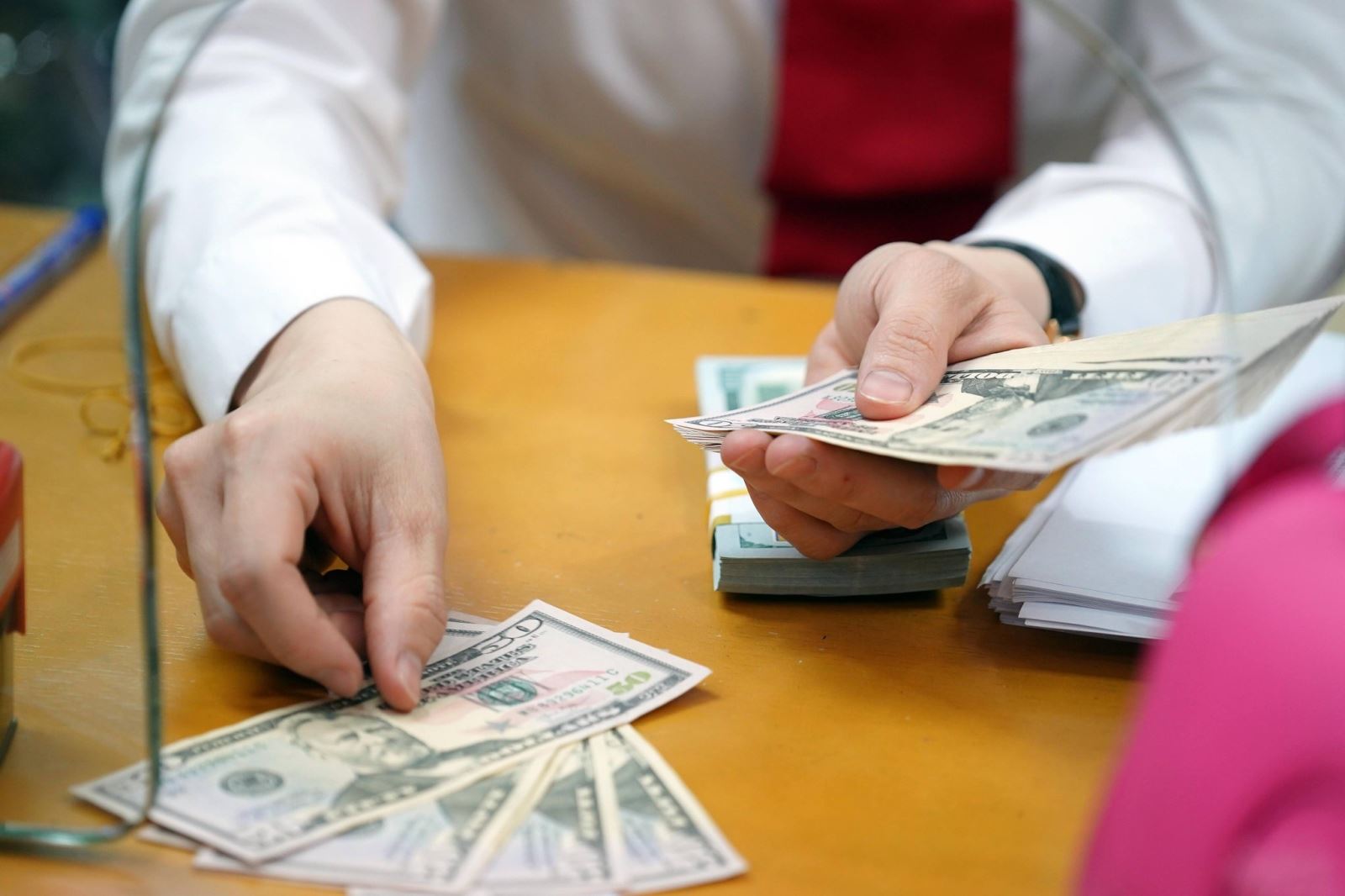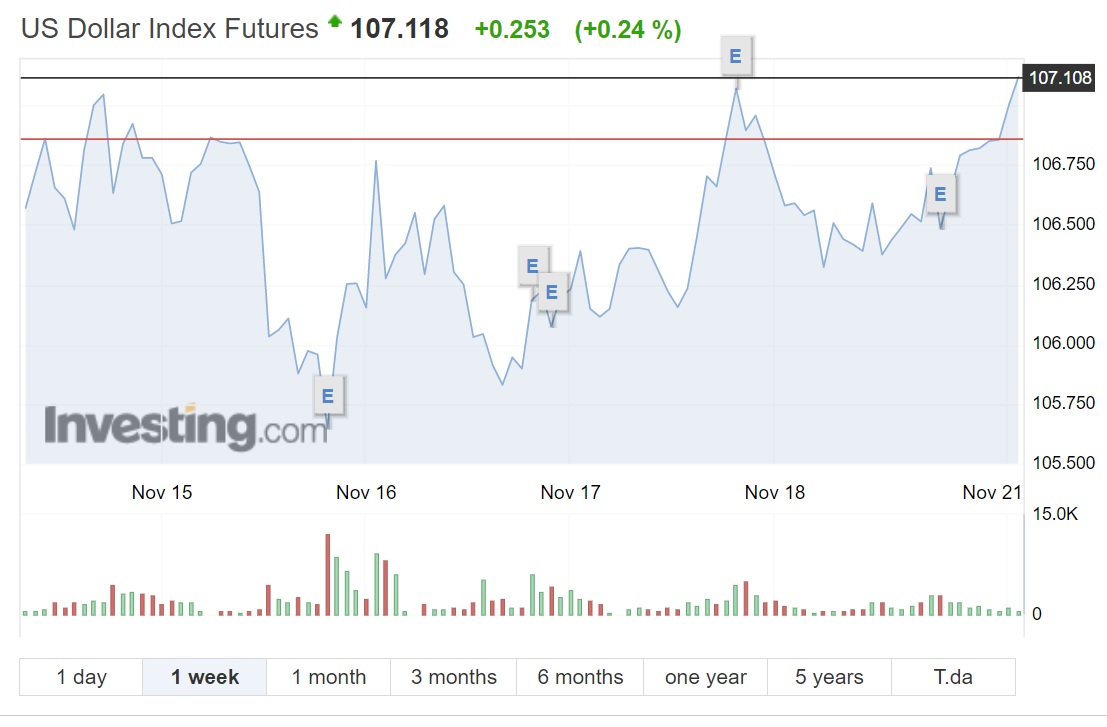How will the US dollar trade next year?
In a year where US inflation will drop sharply and the Fed will start to discuss rate reduction, how will the US dollar trade?

The median one-year forecast for euro/dollar from the monthly Reuters poll is currently 1.04
>> Is the US dollar’s rise a speculative bubble?
Mr. Steve Barrow, Head of Standard Bank G10 Strategy, said there seem to be three scenarios. The bearish scenario for the US dollar assumes that US inflation will fall quickly, the Fed will start to talk rate cuts, global economic recovery will develop and asset prices, meaning both bonds and stocks, will rally in the midst of a solidly risk-on global financial environment.
The bull argument for the US dollar is clearly the opposite, with persistent inflation, continued rate hikes, deeper recessions and a persistent risk-off bias to financial asset prices.
The third scenario is that the US dollar tends to fall between these two stools, which probably implies no clear direction albeit with lots of volatility as the bull and bear scenarios collide.
As far as we can see most analysts anticipate the last scenario. For instance, the median one-year forecast for euro/dollar from the monthly Reuters poll is currently 1.04; the same as today’s rate. For sterling/dollar it is 1.17; again, very close to current levels. Now clearly, we realise that these median estimates often come out close to current levels as the bulls and the bears tend to cancel each other out, but even the modal estimate is 1.05 for euro/dollar which really does suggest that the market sees the currency going practically nowhere next year. Our own forecast is higher at 1.10.
So where is the difference? Is it that we see the first scenario while most analysts see something like the third one? Not necessarily. The issue that Mr. Steve Barrow thinks is crucial here is the timing in how the FX market responds to various macroeconomic and financial market developments. For instance, it is not necessarily his view that there’s going to be a dramatic fall in inflation next year with the Fed quickly cutting rates, economic recovery blossoming and financial asset prices soaring.
“If we though that all of this was going to happen, we’d probably be pitching euro/dollar at 1.20, or even 1.30 at the end of next year, not 1.10. Our view is that through next year the market will increase its expectations that all of these things will start to happen, perhaps not until 2024, but this expectation alone will be sufficient to weigh on the dollar”, said Mr. Steve Barrow.
>> Is the US dollar rally ending?
In other words, the US dollar bears won’t wait for all these things like lower Fed rates to develop before selling the dollar. We’ve already seen some signs of this just recently as the US dollar bears have taken the tiny chink of light that was a sub-par US CPI release to unleash a sharp drop in the greenback. In time this could prove a false dawn; we have certainly seen this before when it comes to US inflation. But as time rolls on the risk of these false dawns will recede and the markets will become more confident; both confident in terms of lifting bond and stock prices and more confident about selling the dollar.

USD index fluctuations
In Mr. Steve Barrow’s view, we don’t need to see bond and stock prices rally dramatically to help initiate a fall in the dollar; just some stability and clear signs of a turn in the corner should be sufficient to cause the sorts of portfolio re-adjustments that will lower the US dollar.
Are we seeing the start of asset price lift-off and dollar weakness now? This could still be jumping the gun. All through this year and last we’ve tended to be very concerned about inflationary risks and, notwithstanding the recent sub-consensus US CPI figure, we still are. While we know that financial market sentiment can turn on a sixpence, the same is not true for inflation. The process of moving to a lower inflation environment is probably in place in the US but this will take time to play out.
For instance, Mr. Steve Barrow doesn’t expect a string of sub-consensus US CPI data to come through in coming months. In fact, the greater risk is still that CPI data disappoints, sending asset prices back down and the US dollar back up. That’s why the Standard Bank’s shorter-term forecasts point to the euro sliding back to the 0.95-1.0 range over the next three months. But, around the spring of next year, the conditions for a weaker dollar will start falling into place and that should help the euro climb to 1.10 by the end of 2023, and hence well above the 1.05 that most analysts seem to be expecting.








